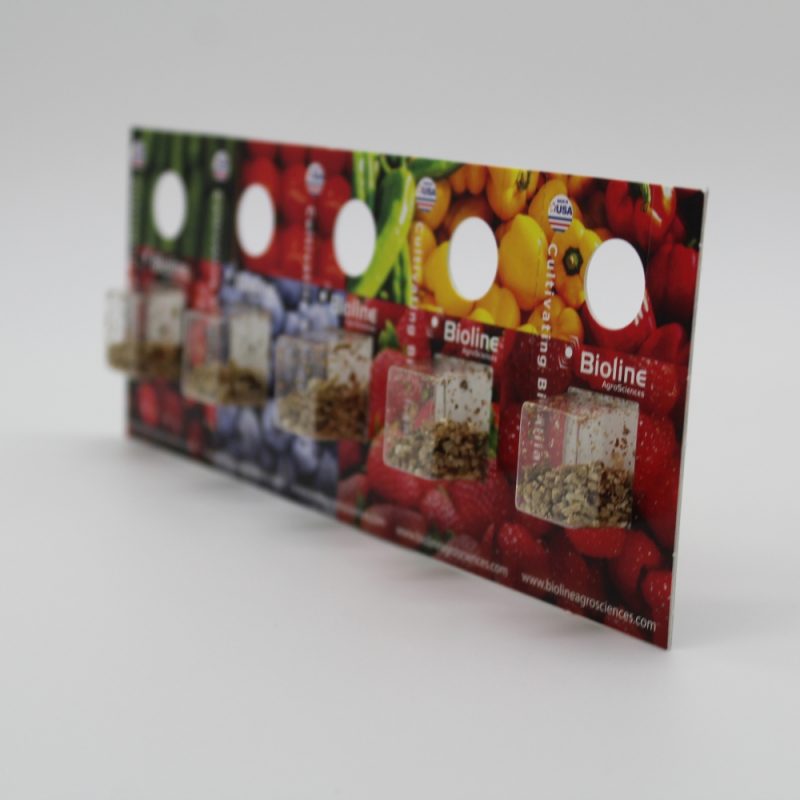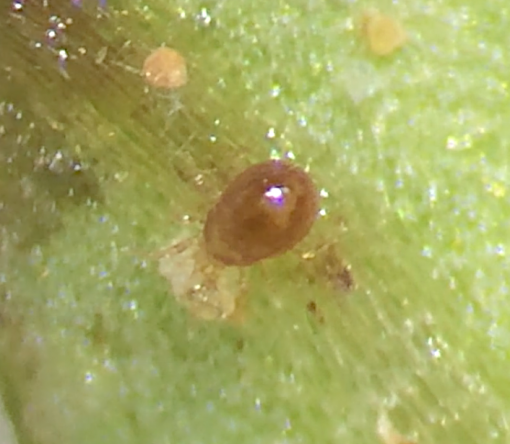What are some of the most common houseplant pests you can think of? Spider mites, mealy bugs, fungus gnats… dare I say, THRIPS?! Sorry for the swear word, but as keepers of plants, we’re bound to run into one of these pests. The worst part is, they can come from an open window, or the draft from your front door, or some other external factor that is simply out of your control. For the longest time, chemical sprays was the only way to combat an infestation. Now, I’m not here to preach about the negative effects of chemical sprays because everyone is entitled to their chosen methods of pest control. I mean, we do sell these control products in store. On the contrary, I’d like to offer just another path now available to you at Golden Acre, which happens to be on the more natural side of the scale; Predatory Bugs.
A little white ago, we began looking into predatory bugs as a form of pest control. We started selling products like ladybugs for aphid control in the garden, and then expanded into bees and praying mantis. We even did a webinar highlighting some of the good bugs already in your garden like spiders! This year, we were introduced to Bioline Agrosciences and became friends for life. Some of our team members absolutely fangirl over this brand because of what their products can do for not only outside plants, but also houseplants.
Who is Bioline? I mean, they say it best.
“Bioline AgroSciences Ltd produces and markets a wide range of invertebrate biological control organisms which are used for control of insect pests in a variety of crops. We are a global company, active in 30 different countries, with particular strength in Europe and North America. Our primary target crops are protected vegetables, ornamentals, soft fruits and berries. At Bioline AgroSciences Ltd we pride ourselves on providing the highest quality products and service in order to support growers in maintaining yield and quality of their produce.”
If you’ve never used predator bugs to combat a pest problem, you may be thinking, I want to get rid of bugs, not introduce more into my home. I get it. What if I told you these little mites are barely visible and will seek out and attack problem pests? Set it and forget it vibes. Right now, we have an array of predator bugs that’ll target specific pests. Some are so voracious they’ll target eggs all the way to adult pests. This means, you won’t have to keep applying a chemical spray multiple times to catch all stages of the pest attacking your plant. These predators will not harm you, your kids, pets, or plants. They have but one purpose. To feed on or attack (or both) the bugs causing your plants harm.
FEATURE | AMBLYLINE & ANDERLINE PREDATOR BUGS
Amblyline – Amblyseius cucumeris | COMING SOON
Amblyline biological control agent contains the predatory mite Amblyseius cucumeris. It is a predator of various thrips species and is highly effective against their larvae. They disperse quickly into the plant, so you should see improvement in a couple weeks depending on the mite.
Anderline – Amblyseius andersoni | AVAILABLE NOW
Anderline biological control agent contains the predatory mite, Amblyseius andersoni. It is a predatory mite that feeds on many types of small arthropod prey and pollen. This predator will target pests like the web-making spider mite and will also feed on pollen and thrip larvae to survive when their main food source is depleted.
That’s not all we carry. We have a whole Live Predator Bugs section on our website where you can narrow down products to solve whichever bug problem you have. There’s even photos in case you’re not sure what you’re dealing with. Bioline also has an incredible mobile app where can learn and share with others. We were so lucky to have Brad Vandermey from Bioline Agrosciences come to our Cannabis Townhall just a couple weeks ago and share his pest prevention knowledge. He left us some samples of the above Ambyline & Anderline products to giveaway to you! Super easy to install, just hang them on your houseplant and the mites will disperse through a hole on the package. Find that giveaway post on our Facebook and Instagram channels.
In closing, if you’re dealing with pests right now, or just want to explore preventative measures for your houseplants, learn more about Bioline products on our website, or come visit our houseplant department in store.




